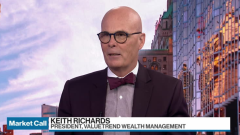Oct 3, 2023
Australia Extends Rate Pause at Bullock’s First Meeting
, Bloomberg News

(Bloomberg) -- Australia’s central bank kept its key interest rate unchanged while retaining a tightening bias on Tuesday as new Governor Michele Bullock gauges the impact of 4 percentage points of hikes.
The Reserve Bank held its cash rate at 4.1% for a fourth meeting in Sydney, as anticipated by both economists and money markets. The string of pauses suggests a surprise shift in economic data will be needed to prompt any action.
“Some further tightening of monetary policy may be required to ensure that inflation returns to target in a reasonable timeframe, but that will continue to depend upon the data and the evolving assessment of risks,” Bullock, who took the helm just over two weeks ago, said in her post-meeting statement.
A relatively unchanged statement following a quickening of inflation in response to higher oil prices prompted traders to put a dovish spin on the policy outlook. The Australian dollar extended declines against most developed-world currencies as money market bets now imply a less than 30% chance of a rate hike in November.
The RBA has moved at a slower pace than most of its major counterparts to take account of the rapid pass-through of tightening to Australian borrowers, who are mainly on floating-rate mortgages.
The central bank remains concerned that sticky services prices — and a spike in oil — could untether inflation expectations. Figures last week showed an acceleration in monthly CPI with Australia’s job market, like many in the developed world, still showing surprising resilience.
What Bloomberg Economics says...
“Policy continuity is the key standout from Michele Bullock’s first meeting as governor”
“The RBA’s assertion that more hikes may be needed is likely to turn out to be jawboning”
— James McIntyre, economist
For the full note, click here
Bullock highlighted “significant uncertainties” around the economic outlook. These included:
- Services price inflation proving surprisingly persistent overseas and the same potentially occurring in Australia
- Lags in the effect of monetary policy
- How firms’ pricing decisions and wages respond to slower economic growth in a tight labor market
- The outlook for household consumption; and
- the Chinese economy due to ongoing stresses in the property market
The long and variable lags associated with monetary policy are a key reason why the RBA is moving cautiously. The ongoing expiry of a batch of home loans fixed at record low rates during the pandemic remains a cloud on the horizon.
Over 90% of new Australian home loans are on floating rates, meaning the effective mortgage rate has climbed to 5.6% from 2.75% in Australia — whereas in the US borrowing costs rose to 3.6% from 3.3% — during the current tightening cycle, Westpac Banking Corp. calculations show.
Another reason for a higher hurdle to hiking is an impending overhaul at the RBA, which remains without a deputy governor. The bank is also yet to replace Assistant Governor Luci Ellis while two other roles — chief operating officer and chief communications officer — are still vacant.
Those appointments together with progress on bedding down recommendations of a wide-ranging review of the RBA “likely add to that hurdle,” said Su-Lin Ong, chief economist at the Royal Bank of Canada.
“The November meeting and full update of the RBA’s macro forecasts will be key for policy deliberations and whether the tightening bias will need to be exercised,” she said.
Economists, including Ong, expect one more hike to 4.35% with CPI only forecast to return to the RBA’s 2-3% target in late 2025.
Bullock repeated that the bank will do what it takes to bring inflation back to target. The nation’s economy has been supported by a jump in population growth that is helping to ease labor shortages and providing additional demand.
--With assistance from Tomoko Sato and Matthew Burgess.
(Adds comments from economists, updates markets)
©2023 Bloomberg L.P.






